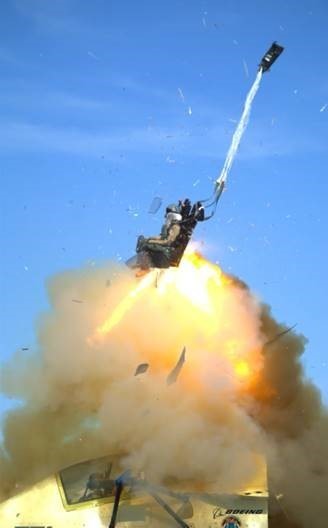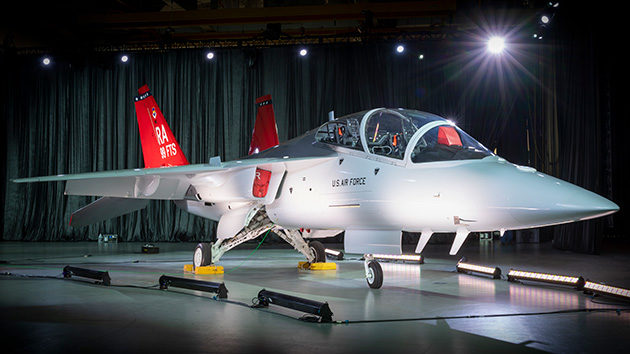Developmental flight testing of the T-7A Red Hawk advanced trainer will likely begin this summer, as ejection seat issues that delayed the program seem headed for resolution soon, according to Boeing and Air Force sources.
Problems with the ejection seats prompted USAF and Boeing to slow the program down in December, delaying production deliveries until the second half of 2024. The seats did not behave as expected in tests with pilot manikins representing the smallest class of potential pilots.
“We anticipate EMD (engineering, manufacturing and development) flight testing will begin this summer after receiving the military flight release,” a Boeing spokesperson told Air & Space Forces Magazine. “We continue to progress on T-7 escape system testing. Along with the U.S. Air Force, we have compiled a lot of data that shows we are moving in the right direction.”
The spokesperson also highlighted March 29 testimony from Air Force acquisition executive Andrew Hunter, who told the House Armed Services tactical aviation subcommittee that “we did have a substantial achievement in February of getting through performing a sled test dealing with some of the issues of the escape system that we were hung up on.”
Clearing those tests “would allow us to get to a military flight release and begin the developmental testing, so we are now moving forward from areas where the program had gotten stalled,” Hunter added.
Boeing has built five T-7As and continues to fly T1 and T2, which were built before program award, to gather data. But the other aircraft are awaiting clearance to fly, and the Air Force Director of Operational Test and Evaluation has barred any military pilots from flying the T-7A pending resolution of the ejection seat issue, preventing government flight test activities from being initiated.
Although built on “production” tooling, T1 and T2 are not fully representative of the eventual operational aircraft. The three other aircraft are.
The ejection seat issue arose at the same time as separate concerns about flight controls, and the combination prompted the program delay, but the flight control problem was resolved several months ago.
Sources told Air & Space Forces Magazine the Air Force either improperly evaluated data gathered during earlier ejection seat testing, incorrectly instrumented the manikins, or both. A reassessment of the data, combined with the testing Hunter referenced, now show that the seats are compliant, the sources said.

The Air Force removed T-7 procurement funds from its fiscal year 2024 budget request, thinking it would not be able to start production due to the ejection seat delay. The service could not immediately say if it has any plans to reprogram funds in 2024 to get production underway sooner.
According to its budget justification documents, the Air Force plans to build 94 T-7s over the next five fiscal years at a cost of $2.205 billion. Production begins with 14 aircraft in fiscal 2025, followed by 21, 23, and 36 in 2026-28, respectively. Funding starts at $330.6 million in 2024 and ramps up to $834.2 million by 2028. To complete the planned buy of 351 aircraft is estimated to cost a total of $7.65 billion, including funds appropriated thus far, and assuming the planned aircraft are purchased.
The T-7A is the first USAF aircraft being designed to accommodate small women, and ensuring the ejection system works for their body types has been flagged as a potential problem for some time.
The Government Accountability Office, in its 2021 Weapon System Annual Assessment, said the T-7’s ejection seat was one of two “primary” risks to the trainer’s development, and in the following year’s report, pegged the ejection seat as a “top” program risk.
The next major programmatic milestone for the T-7A is planned for November, when Pentagon acquisition and sustainment chief William LaPlante will decide whether the aircraft can enter Low-Rate Initial Production, known as Milestone C. Aircraft delivered after that decision point would arrive in late 2024.
In December 2022, a Boeing spokesperson told Air & Space Forces Magazine that the company was working with USAF “to re-baseline the schedule” for flight test and production, which would take into account supply chain issues and labor shortages that have also afflicted the program.
